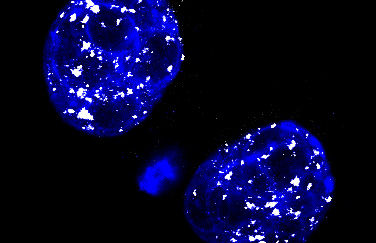Eye scan makes diseases visible at an early stage
More and more people over 50 are suffering from age-related vision disorders. According to the World Health Organization, in four out of five cases they could be avoided if they were diagnosed at an early stage. A European team of scientists, including the Leibniz Institute of Photonic Technology (Leibniz IPHT) in Jena, has researched a new method that will enable doctors to better detect such eye diseases in the future. The optical method can provide detailed information on the condition of the retinal tissue. With this eye scan, physicians will be able to detect aggressive forms of age-related macular degeneration sooner and even detect neurodegenerative diseases such as Alzheimer's.

The European research team is building a device on which patients can scan their eyes without contact and receive a diagnosis a few minutes later.
Ewald Unger/ Medical University of Vienna
A laser beam hits the eye. This sounds more like a risk of injury at first, but in this case it opens up a chance of healing. "We use laser light to obtain comprehensive molecular information about the retina and thus early indications of diseases," explains Clara Stiebing from Leibniz IPHT. In order to find out how much laser power the eye can tolerate and which optical pathway the laser takes, the researcher examined retinal samples and designed a structure simulating the conditions in the human eye. Clara Stiebing and the research team from Leibniz IPHT, Friedrich Schiller University Jena, Medical University Vienna and partners from the Netherlands published their study in the journal "Neurophotonics".
How intense the laser can be without harming the eye, the scientists have calculated exactly on the basis of applicable safety regulations. The result: a laser beam that is twenty times weaker than the lasers that researchers otherwise use for their spectroscopic measurements. Using label-free, molecularly sensitive Raman spectroscopy, they are able to obtain a molecular fingerprint of the retina. This reveals how high the content of lipids, proteins, carotenoids and nucleic acids is. In this way, changes in the retina become visible, enabling doctors to detect diseases at an early stage.
A particular challenge for the researchers was that the conditions in the human eye were not optimal for optical measurements. "The fact that we are still able to achieve meaningful, reliable results with the attenuated laser beam clearly shows that our technology will enable us to obtain comprehensive molecular information about the structure of the retina in the future," said Clara Stiebing. The partners of the Medical University of Vienna are currently building a device that combines Raman spectroscopy with optical coherence tomography (OCT). With the help of OCT, the morphology of the retina can be very quickly made visible and suspicious areas can be identified. Raman spectroscopy can then be used to characterise these areas at the molecular level. "This enables us to obtain high-resolution images from all layers of the retina including information on their molecular composition," explains Prof. Jürgen Popp, scientific director of Leibniz IPHT. "The fact that we can now supplement the OCT previously used in ophthalmology with Raman spectroscopy can significantly improve the accuracy of the diagnoses.“
The European research team is currently working on the medical approval of the device. Once approved, the device can be tested on patients. The patients would then sit in front of the device, have their eye scanned without contact and a few minutes later, they would receive a reliable diagnosis.
Original publication
Other news from the department science
Most read news
More news from our other portals
See the theme worlds for related content
Topic World Spectroscopy
Investigation with spectroscopy gives us unique insights into the composition and structure of materials. From UV-Vis spectroscopy to infrared and Raman spectroscopy to fluorescence and atomic absorption spectroscopy, spectroscopy offers us a wide range of analytical techniques to precisely characterize substances. Immerse yourself in the fascinating world of spectroscopy!

Topic World Spectroscopy
Investigation with spectroscopy gives us unique insights into the composition and structure of materials. From UV-Vis spectroscopy to infrared and Raman spectroscopy to fluorescence and atomic absorption spectroscopy, spectroscopy offers us a wide range of analytical techniques to precisely characterize substances. Immerse yourself in the fascinating world of spectroscopy!




















































